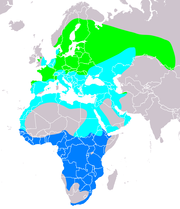Superregnum: Eukaryota
Cladus: Unikonta
Cladus: Opisthokonta
Cladus: Holozoa
Regnum: Animalia
Subregnum: Eumetazoa
Cladus: Bilateria
Cladus: Nephrozoa
Superphylum: Deuterostomia
Phylum: Chordata
Subphylum: Vertebrata
Infraphylum: Gnathostomata
Megaclassis: Osteichthyes
Cladus: Sarcopterygii
Cladus: Rhipidistia
Cladus: Tetrapodomorpha
Cladus: Eotetrapodiformes
Cladus: Elpistostegalia
Superclassis: Tetrapoda
Cladus: Reptiliomorpha
Cladus: Amniota
Classis: Reptilia
Cladus: Eureptilia
Cladus: Romeriida
Subclassis: Diapsida
Cladus: Sauria
Infraclassis: Archosauromorpha
Cladus: Crurotarsi
Divisio: Archosauria
Cladus: Avemetatarsalia
Cladus: Ornithodira
Subtaxon: Dinosauromorpha
Cladus: Dinosauriformes
Cladus: Dracohors
Cladus: Dinosauria
Cladus: Saurischia
Cladus: Eusaurischia
Subordo: Theropoda
Cladus: Neotheropoda
Cladus: Averostra
Cladus: Tetanurae
Cladus: Avetheropoda
Cladus: Coelurosauria
Cladus: Tyrannoraptora
Cladus: Maniraptoromorpha
Cladus: Maniraptoriformes
Cladus: Maniraptora
Cladus: Pennaraptora
Cladus: Paraves
Cladus: Eumaniraptora
Cladus: Avialae
Infraclassis: Aves
Cladus: Avebrevicauda
Cladus: Pygostylia
Cladus: Ornithothoraces
Cladus: Ornithuromorpha
Cladus: Carinatae
Parvclassis: Neornithes
Cohors: Neognathae
Cladus: Neoaves
Ordo: Accipitriformes
Familia: Accipitridae
Subfamilia: Perninae
Genus: Pernis
Species: P. apivorus - P. celebensis - P. ptilorhyncus – P. steerei
Name
Pernis Cuvier, 1816: 322
References
Cuvier, G.L. 1816–1817. Le Règne Animal distribué d'après son organisation pour servir de base à l'histoire naturelle des animaux et d'introduction à l'anatomie comparée. Avec Figures, dessinées d'après nature. Tome I. Contenant l'introduction, les mammifères et les oiseaux. Edition 1, Deterville, Paris. pp. i-xxxvii + 1–540. DOI: 10.5962/bhl.title.41460 BHL Reference page. [original description: p. 322]
Gamauf, A., & Haring, E. (2004). Molecular phylogeny and biogeography of Honey-buzzards (genera Pernis and Henicopernis). Journal of Zoological Systematics and Evolutionary Research 42 (2): 145–153. DOI: 10.1111/j.1439-0469.2004.00250.x Reference page.
Pernis is a genus of birds in the raptor subfamily Perninae. Its members are commonly known as honey buzzards. The genus name is derived from Ancient Greek pernes περνης, a term used by Aristotle for a bird of prey.[2]
They breed in temperate and warmer climates of the Old World, and are specialist feeders on wasp and bee larvae. The two temperate species, the European and crested honey buzzards, are migratory.
They breed in woodland, and are often inconspicuous except when displaying.
The members of this genus have plumage which mimics that of juvenile common buzzards or of Nisaetus hawk-eagles. It has been suggested that the similarity has arisen as a partial protection against predation by larger raptors such as goshawks, which may be wary about attacking what appears to be a better-protected species with stronger bill and talons than the honey buzzards actually possess.
Species
It consists of four medium-sized, broad-winged species.
| Common name | Scientific name and subspecies | Range | Size and ecology | IUCN status and estimated population |
|---|---|---|---|---|
| European honey buzzard or Eurasian honey buzzard
|
Pernis apivorus (Linnaeus, 1758) |
migratory: breeding Europe and western Asia, wintering Africa |
Size: Habitat: Diet: |
LC
|
| Crested honey buzzard, eastern or oriental honey-buzzard
|
Pernis ptilorhynchus (Temminck, 1821) |
Southeast Asia | Size: Habitat: Diet: |
LC |
| Barred honey buzzard
|
Pernis celebensis Wallace, 1868 |
Sulawesi. | Size: Habitat: Diet: |
LC
|
|---|---|---|---|---|
| Philippine honey buzzard
|
Pernis steerei WL Sclater, 1919
Two subspecies
|
Philippines. | Size: Habitat: Diet: |
LC |
Comparing sequences from a short subsection of the mitochondrial cytb gene, Gamulf and Haring found five clades: apivorus, steerei–winkleri, celebensis, philippensis–orientalis–ruficollis, and torquatus–ptilorhynchus–palawanensis. They proposed splitting the steerei–winkleri group from P. celebensis into a new species Pernis steerei, but felt that splitting Pernis ptilorhynchus would be "premature" given the lack of morphological differences.[3]
Despite the name "crested honey buzzard", the subspecies P. p. orientalis, P. p. philippensis, and P. p. palawanensis all lack crests.[3]
References
British Birds, volume 99, March 2006
Ferguson-Lees, Christie, Franklin, Mead and Burton Raptors of the World ISBN 0-7136-8026-1
Gensbøl, Benny (1989). Collins guide to the Birds of Prey of Britain and Europe North Africa and the Middle East, William Collins Sons and Co Ltd. ISBN 0-00-219176-8
Notes
"Accipitridae". aviansystematics.org. The Trust for Avian Systematics. Retrieved 2023-07-26.
Jobling, James A (2010). The Helm Dictionary of Scientific Bird Names. London: Christopher Helm. p. 51. ISBN 978-1-4081-2501-4.
Gamauf, A.; Haring, E. (2004). "Molecular phylogeny and biogeography of Honey-buzzards (genera Pernis and Henicopernis)". Journal of Zoological Systematics and Evolutionary Research. 42 (2): 145–153. doi:10.1111/j.1439-0469.2004.00250.x. PDF
Retrieved from "http://en.wikipedia.org/"
All text is available under the terms of the GNU Free Documentation License





